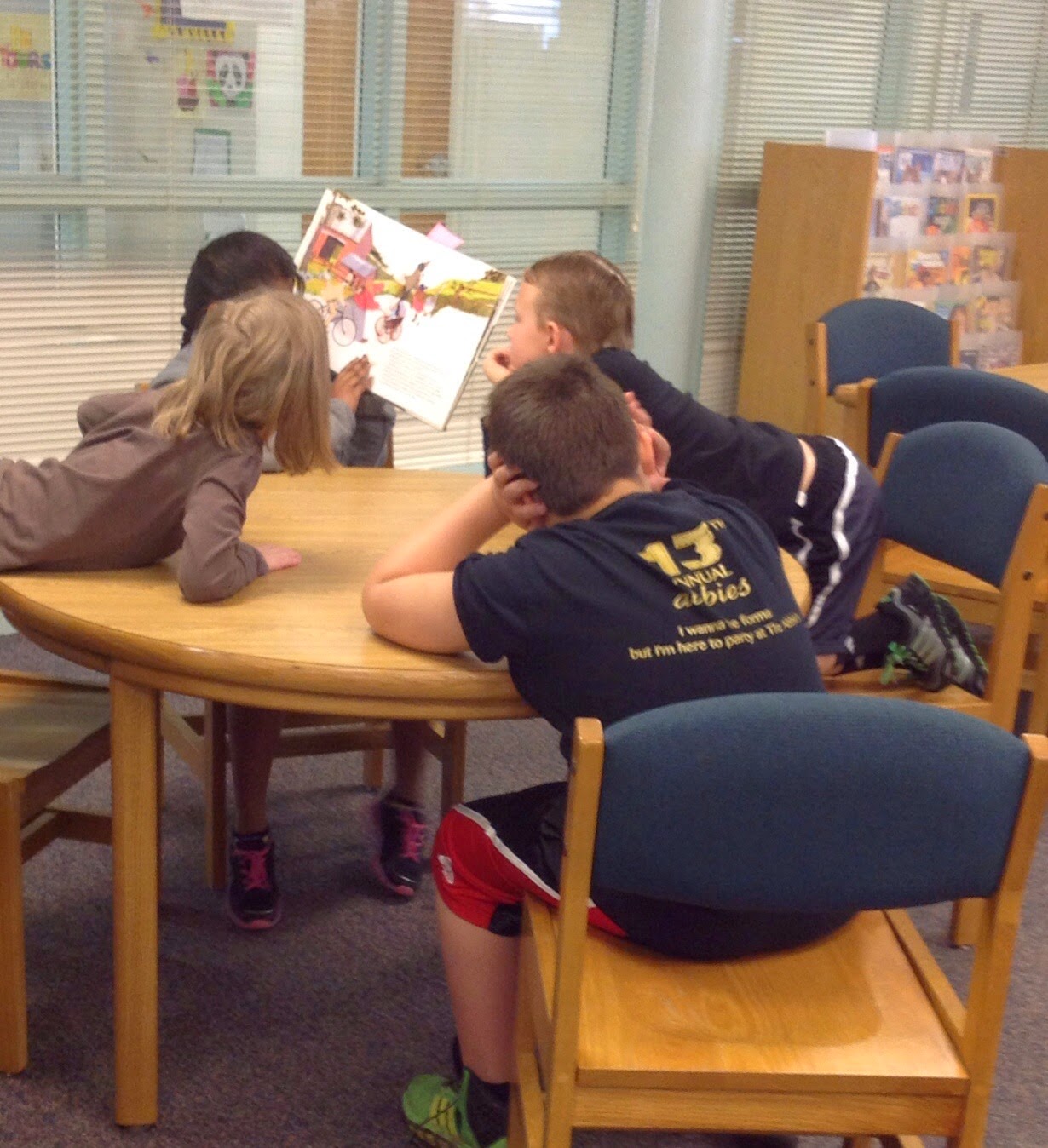 |
| What can students learn from one another? |
"What are you thinking?" I asked, trying to get to where her confusion might be, but allowing her to continue to sort it out.
"It just doesn't make sense," she said as she reread the sentence to me. "Why wasn't he going to worry?" I waited for her to continue, but she did not.
"Why don't you go ahead and finish the chapter. Then we can come back to this part and talk about it," I suggested thinking that maybe the last part might help her to put her thinking together a bit more. I also knew that talking about this with another student might allow her to sort out her question a bit more.
After the pair finished reading we returned to the book. "What you did was important to understanding the story," I reminded Autumn. "Sometimes readers will just skip a part that is confusing, but you reread and looked back a bit to think more about what the author said. Can you share with your friend the part that seemed confusing?" I inquired.
Autumn reread the part, and Matthew looked thoughtfully at her for a minute before he replied. "I think he won't worry because he knows where to find Mudge now," Matthew considered.
They went back and forth for a bit, discussing the question, going into the text, and considering different possibilities as to why Henry felt this way. As they talked I inquired, "Do you think Mudge ran away or got lost?" The two readers continued to think about this. I wasn't looking for a particular answer as much as I was hoping to get them to use evidence from the story to think about it. When they would reply I would ask that they show me the place that made them think that.
Matthew quickly went back into the text to use parts of the story to support his thinking. This was harder for Autumn, but I could tell she was listening to Matthew and really considering what he was saying. He was causing her to rethink some of the events in the story.
As I listened to these two talk about the story, I began to think about how important diversity in our grouping can be. There are many reasons we pull small groups together, but often it is because we have noticed they need the same thing. Sometimes groups get put together for a particular reason, and then we forget to really rethink our purpose and keep moving students around.
As I listened to these two talk together, I began to think about how individuals construct information with other learners. Matthew gave Autumn new things to think about. He challenged her thinking and because these two respect one another, they listened to each other and were willing to reconsider what they thought they knew. While Matthew helps Autumn to reconsider new thinking, Autumn helps Matthew to look a little more deeply into text. Her questioning slowed him down a bit, and reduced his tendency to speed through reading with only surface level understanding.
When we think about a child's zone of proximal development (Vygotsky), that space between what they know and what can do with support, we often think about how we as teachers can help them to make the next shift in understanding. I try to continually remind myself that this theory is a social theory in nature and that sometimes the most powerful shifts in understanding really come from conversations with peers who often are closer in language to where the student is. Often the rapport students have with one another can help lift learners to new places.
There are many things to consider when grouping students for learning including what they understand and what they need to know next, but I'm trying to think more and more about what learners can get from one another. Instead of focusing solely on what they need, I'm trying to think more about what learners can bring to one another. How can I bring students into a group to compliment the thinking of one another? How can I bring students together so they can help each other reach new understandings?
Thank you for the reminder to sit back and let students share their thinking with each other and with you. Too often I jump in! It is hard, too, to let children misread a word and then wait till they finish the sentence, allowing time for self correction. I love what happens when I listen to my students!
ReplyDelete